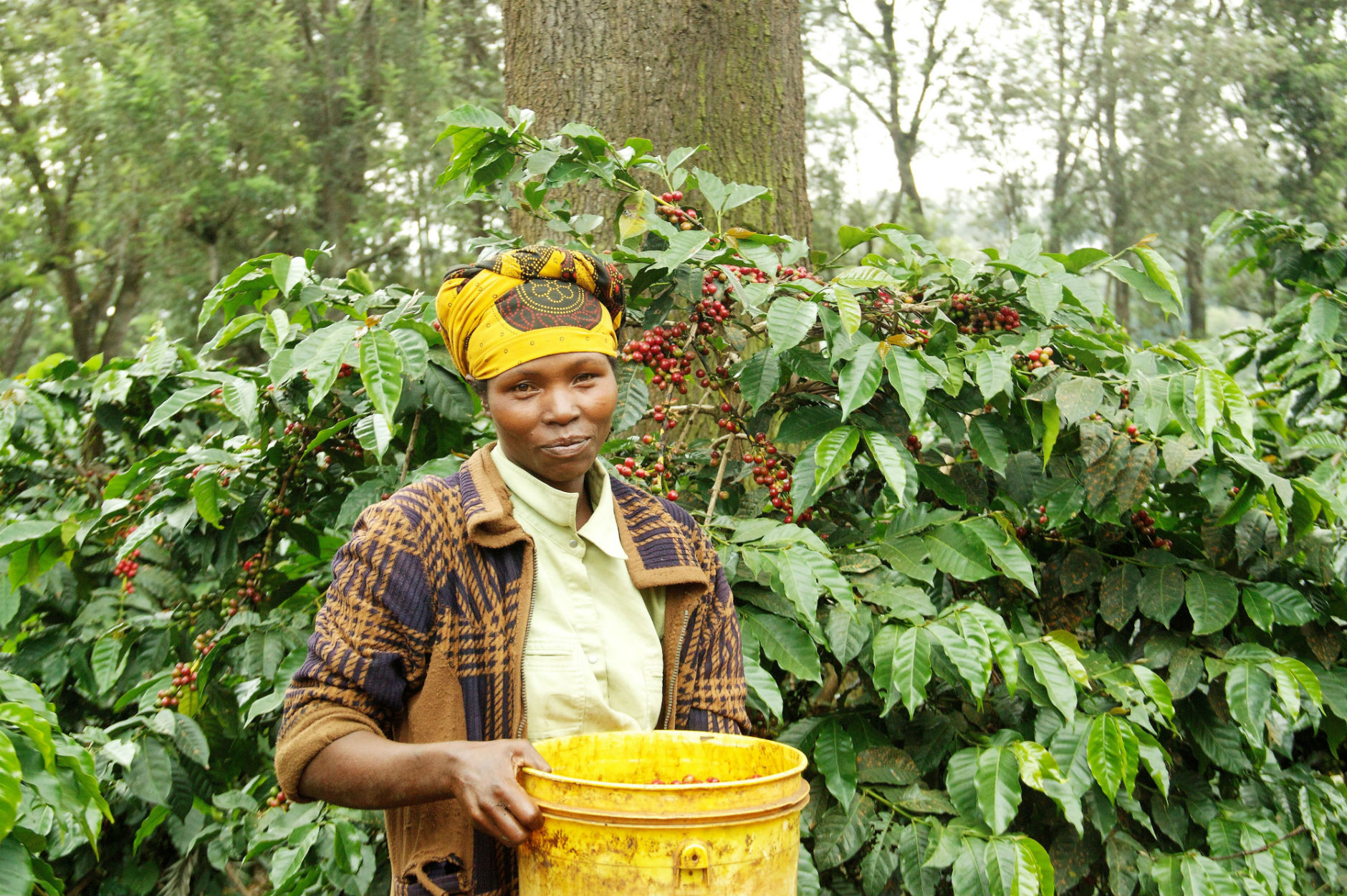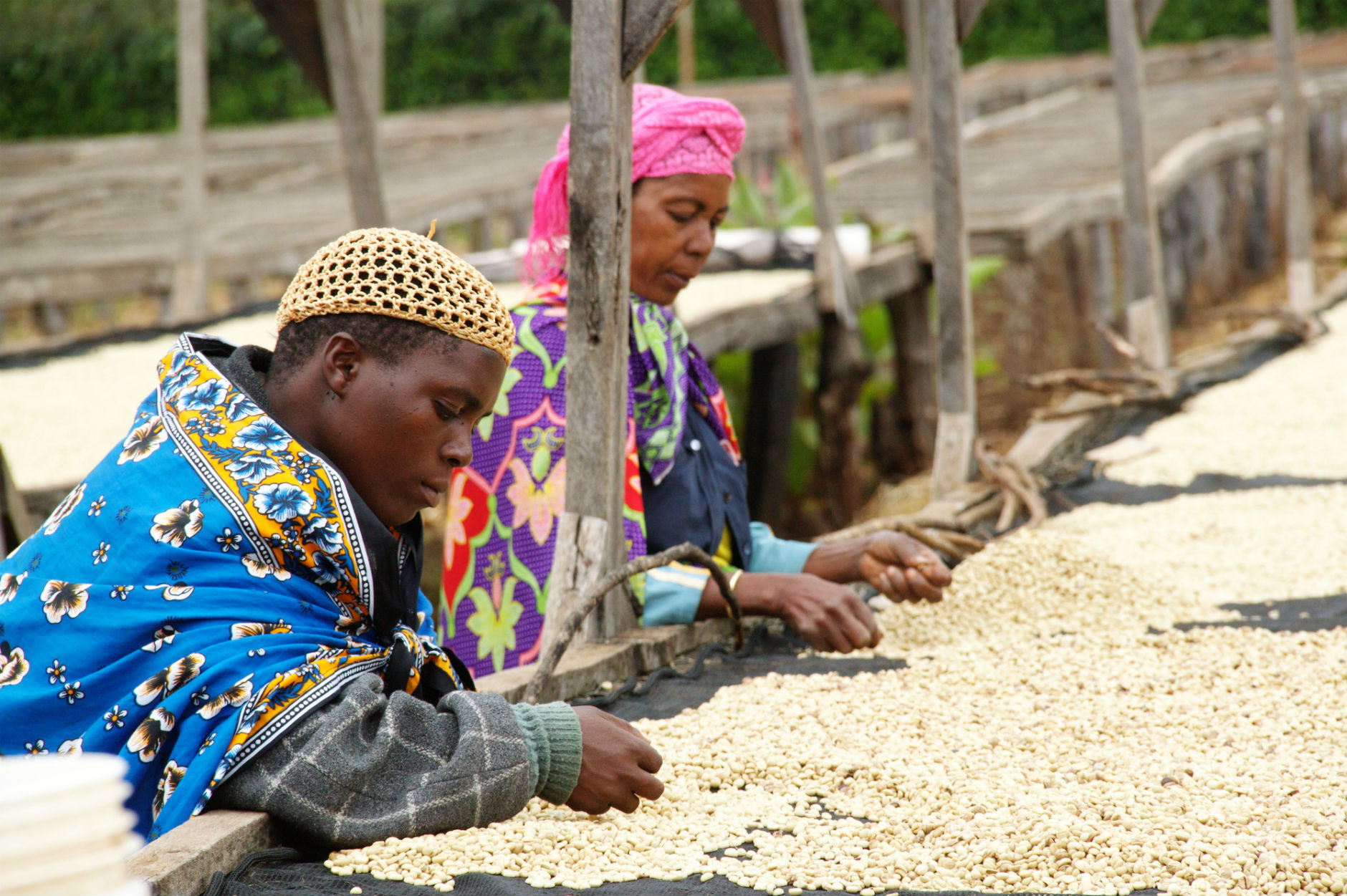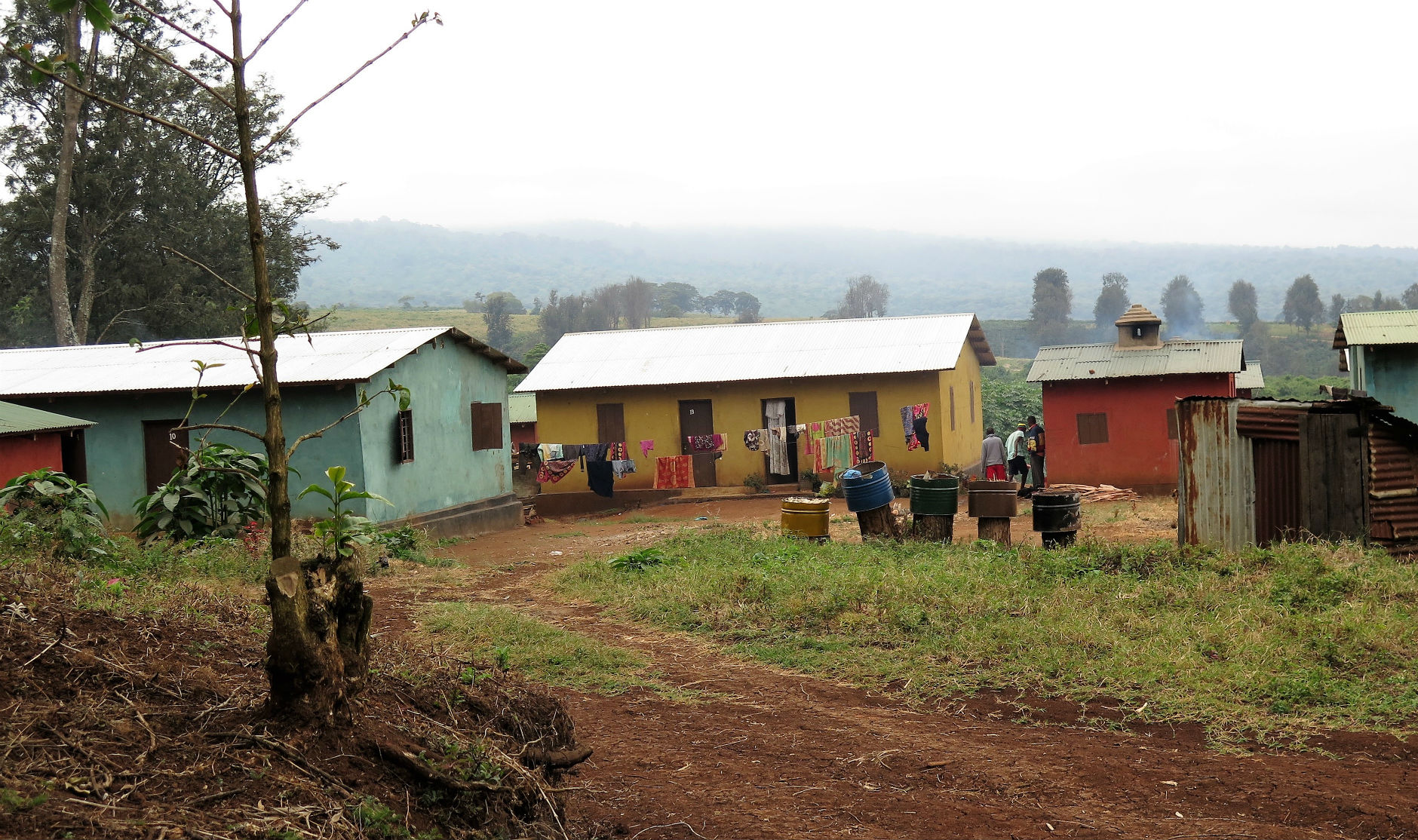Tanzania Ngorongoro Vohora Family Fully Washed Peaberry Crown Jewel
Boxes 0
Warehouses Oakland
Out of stock
Intro
I think I first met Neel Vohora in Chicago in a blizzard during the winter of 2008. He wore khaki shorts and a stetson style hat and I wasn’t quite sure what to make of it all. Neel and I have spent a little more time together since that day nearly a decade ago, kicking around his family’s farms in Karatu, drinking beers in reptile houses in Arusha, rambling down dusty roads in southern Ethiopia, eating shellfish in Seattle.
Neel is a third-generation Tanzanian of Indian heritage, and his family has been in the Tanzanian coffee business since the end of the second World War. The family export business based in Arusha has more than 60 years experience in the country.
Since 1971, the Vohora’s have owned about 1000 acres of farmland on the southern exterior slopes of the Ngorongoro caldera near the town of Karatu in Tanzania’s lush rift valley. The farms possess Rainforest Alliance certificate, and the family and their 50+ full-time employees on the farm have done a remarkable job of upkeep and preservation of natural beauty while also running a thriving coffee business. They are diversifying into Macadamia, provide temporary housing for harvest labor, and even supply land on the farm for local smallholders to grow beans – a mutually beneficial crop as the legumes fix nitrogen in the soil, a critical step in a healthy cycle of crops.
Neel’s sister Kavita runs the dry mill, roasterie, and export business from Arusha, a two-hour drive away from the farms. Their father, Ajai, lives in nearby Nairobi, Kenya, and is still very much involved in the business of exporting coffee as well. Kavita is a licenced Q-grader, a meticulous cupper and quality agent, a lively companion for a glass of wine, and a new mother. She keeps a small army of pets around the office, including terriers and ducks. Neel, an excellent cook and a knowledgeable farmer with a persistent drive to experiment, has staffed the estate with experienced management. He’s also fond of dogs and has a beautiful Rhodesian Ridgeback that stays on the farm.
The coffees the Vohora family produce achieve consistently high quality from year-to-year despite a number of unique challenges. Water shortages prompted new rainwater basins at critical high points on the farm a few years ago. Animal damage of the coffee trees is frequent and traumatic – usually it’s the water buffalo that are most destructive in herds, though the occasional elephant can be heard at night, making its way through the forest. Lastly, and probably most concerningly, Tanzania has struggled to properly support farmers of all sizes. An already difficult crop, made unnecessarily more precarious by inconsistent support structure, corrupt bureaucracy, and frequent delays at hot and humid ports, would be enough to dissuade all but the most persistent of farmers. Fortunately for us, the Vohoras have persisted.
We’re pleased to have in our possession a super clean lot of their coffee in 60kg bags, and a microlot selection of Peaberry we’re releasing exclusively as a Crown Jewel.
Green
This Tanzanian coffee is a peaberry, a genetic anomaly that occurs in about 5% of most coffees resulting in a single seed (rather than a facing pair) inside the cherry. Peaberrys are objectively adorable. They’re small and round and compact, making the craft of roasting them a little different than other coffees. This lot is of average density and very consistent screen size. It’s average looking moisture figures are accompanied by a slightly elevated water activity. Keep an eye on your sugar browning and Maillard reactions, they could have a tendency to race a little.
The Vohora family grow a mix of cultivars on their estates in an effort to achieve balance between good yields, high quality, and disease resistance. You’ll likely be familiar with their broad-leafed Bourbon and the Blue Mountain New World Typica famously grown on Jamaica but also found with some frequency in Kenya and Papua New Guinea (all of which are former British colonies, and all still use some variation of the British grading system for sizes). SL-28 is Kenya’s famed high quality cultivar first developed in the 1930s from Bourbon trees, and Batian is Kenya’s newest addition. It is a complex genetic soup of varieties (as widely varied as Sudan Rume, SLs, and the Timor Hybrid) intended to produce high yields quickly (within 24-28 months of planting), with great disease resistance especially to East Africa’s notorious fungal strain of Coffee Berry Disease (CBD).
Lastly, Kent is an old cultivar, the first known Arabica selection for leaf rust resistance dating to a single tree from an estate in the Karnataka state of India in 1911. Ceylon was ground zero for rust in 1869, and Indian coffee research led the charge in discovering and developing resistant varieties in the late 19th and early 20th centuries. Kent, named for its estate owner, is from the oldest introductions of coffee to India from Yemen (be they via the monk Baba Budan or the Dutch East India trading company), dating to the mid 17th century, making it a Typica descendant. It is not widely grown outside of India.
Taste
Roast
Firing up the Ikawa this week, I used a compare/contrast of two profiles: one Jen has been using to great success, another I’ve been using with mixed results. You can download them both and try them yourself, if you like: Jen’s Profile involves a smooth slope and soft landing in first crack, ending at 5:15 and 405F. Chris’s Profile starts with a lower charge temp and more dramatic fan speeds, races through Maillard and counteracts high end temperature of 425F with very high fan speed.
The cupping panel unanimously responded favorably to Jen’s roast style, which presented clear pear and molasses flavors in a mild, chuggable cup. My aggressive airflow profile resulted in some lingering sage-like herbal characteristics I’d seek to minimize in future attempts. Rather than publish the unfavorable profile, I’ve instead charted Jen’s Ikawa profile versus the Probatino roast.
Accelerating heat application a bit through Maillard reactions in the solid-drum Probatino, then letting off the gas a little about 30 seconds before the beginning of first crack gave the coffee enough momentum to balance sugar browning and flavor development. The roast ended at 8:22 with about 18% PCD, 90 seconds after first crack. It takes a page from Scott Rao’s constant declining rate of rise, with the exception of late-stage Maillard before first crack, where for about 90 seconds the RoR holds steady at 10 degrees F every 30 seconds.
I felt confident with the medium-light color at 57.8 Colortrack and did not attempt a second batch. The cupping revealed some nuanced floral notes we missed in the Ikawa profiles, with dried mango complimenting a butterscotch and honey-like sweetness. The coffee’s mild acidity lent well to a lighter color with medium length development; I wouldn’t recommend trying to accelerate too quickly after first crack. Better to let these beans develop at a moderate, even temperature, I think.
Behmor
Unless otherwise noted, I follow a set standard of operations for all my Behmor roasts. Generally, I’ll use the 1lb setting, manual mode (P5), full power, and high drum speed until crack. Read my original post and stats here.
Looking at Chris’ results above, I found that his suggestion of even heat application was spot on. I shot for an even development on this coffee simply on intuition, and engaged the P4 profile as soon as the hints of first crack were appearing. This happened to be 15 seconds before first crack, and I allowed this coffee to develop for 1:15 past this point. My goal was to roll through first crack without applying heat too aggressively.
The results on the cupping table were positive, but perhaps a little on the green side. This was my most developed coffee of the week at 12.7% weight loss percentage, but fresh green notes like cucumber, lime, green apple, and sweet basil still came through quite readily. I might suggest taking this coffee a bit further to neutralize the herbal notes for a more sugary profile.
Then again, I have a sweet tooth – if you’re into the herbal side of things, this might just be the profile for you! There’s a lot of dimension to this coffee, and beauty is in the eye of the beholder.
Brew
I’ll confess that I wasn’t quite sure how best to brew this coffee. On the table it presented some delicious flavor notes, but lacked some of the structure need it to make it a cohesive and balanced cup. Immediately I wondered whether compacting it into a short extraction like espresso might add some balance. But before going straight to the GS3, I played around with Evan’s roasts on the Behmor. It’s important to know what a coffee has to offer, and using a V60 at a few different extraction ratios can be a good way to achieve this.
The 1:16.5 had more sweetness and balance than I had experienced on the table, with white raisin, pear, toffee, and sage. Curious if I could get more fruit sugars to come through the cup, I concentrated the brew down to a 1:15 and found more maple, vanilla, and clove, as well as sweet honeydew melon.
On espresso this Tanzania Peaberry created a gorgeous, thick crema and was sweet like kiwis and citrus but with a hint of caraway and a slight mushroom brothiness that made for a really fascinating and delicious shot. When dialing in I found that it retained its character even when over or under extracted. Neel’s coffee is full of surprises but can be surprisingly forgiving and fun to play around with.





